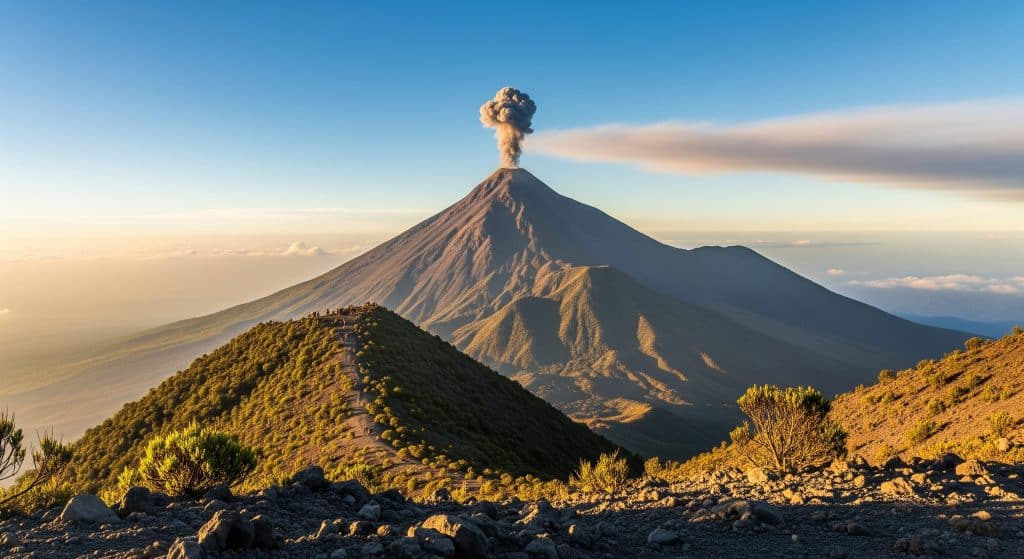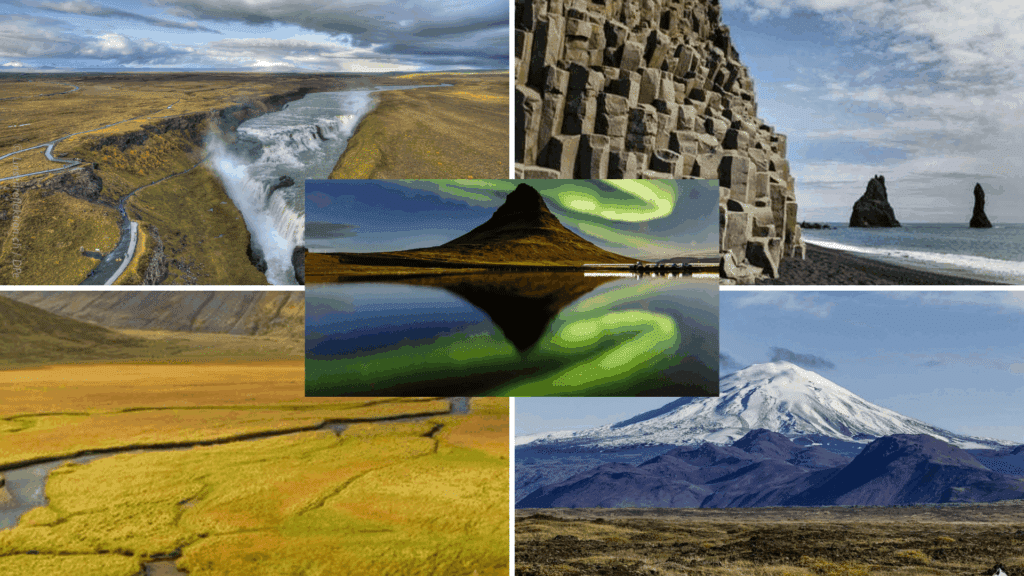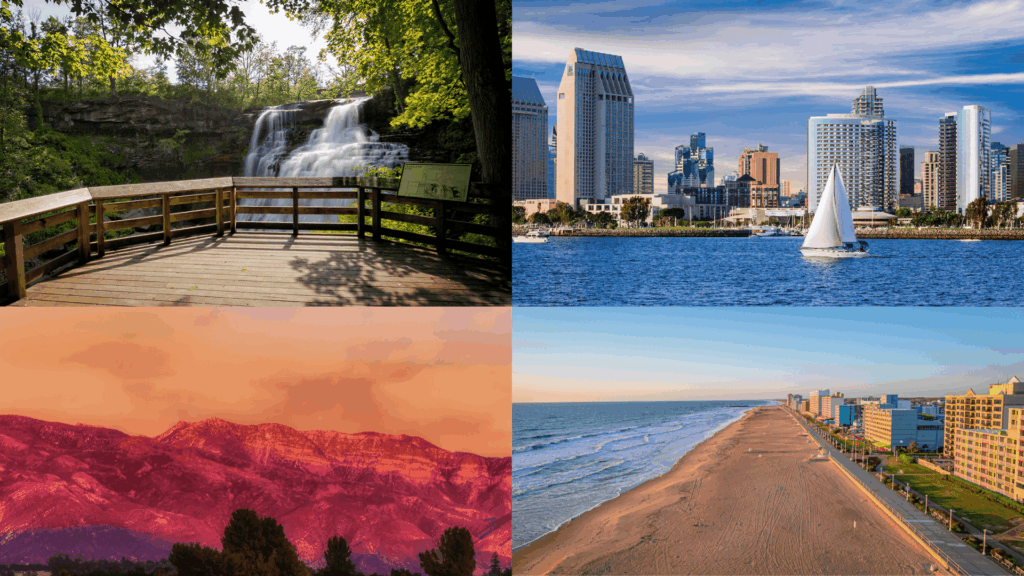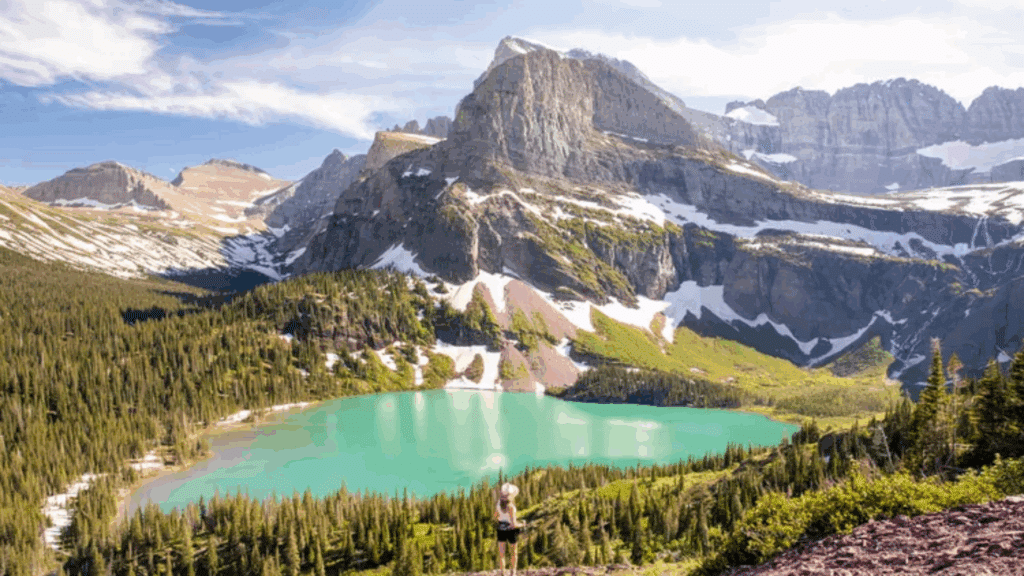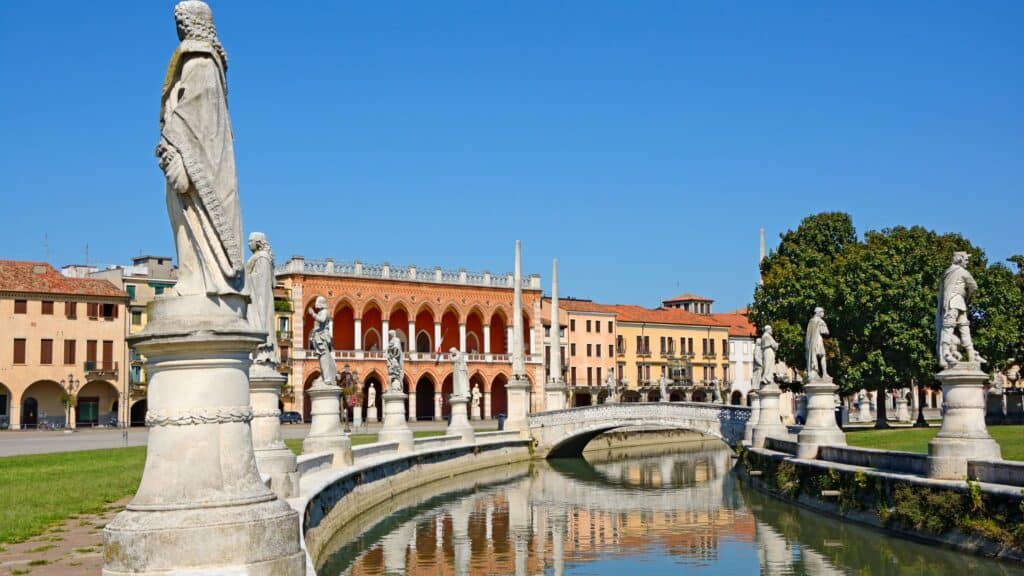Planning your Guatemala trip but unsure about timing? Many travelers struggle with choosing the right season, missing out on perfect weather or amazing festivals due to poor planning.
I’ll show you exactly when to visit Guatemala for your ideal experience, whether you prefer a sunny day out or cultural celebrations.
This complete guide breaks down Guatemala’s climate patterns, seasonal highlights, and month-by-month activities.
You’ll learn the pros and cons of dry versus rainy seasons, find the best times for hiking volcanoes and learning about ancient ruins, and find out when major festivals happen.
Plus, get packing tips and local insights to maximize your Central American getaway regardless of when you travel.
Guatemala’s Climate Explained
Guatemala’s weather isn’t the same everywhere, thanks to its varied landscape and altitude. This country, often called the “Land of Eternal Spring,” enjoys mild temperatures year-round. But the experience changes depending on where you go.
Guatemala has two main seasons: the dry season and the rainy season.
The dry season lasts from November to March, making it the most popular time for tourists who prefer sunny skies and outdoor adventures.
The rainy season from May to October brings afternoon showers that refresh the land, cooler temperatures in some areas, and fewer crowds.
Altitude plays a big role, too. Cities like Antigua and Guatemala City sit at higher elevations, making them cooler than the warmer lowlands near the coast or the jungles of Petén.
Understanding Guatemala’s climate helps you choose the best time to visit based on your travel style and interests.
When is the Best Time to Visit Guatemala?
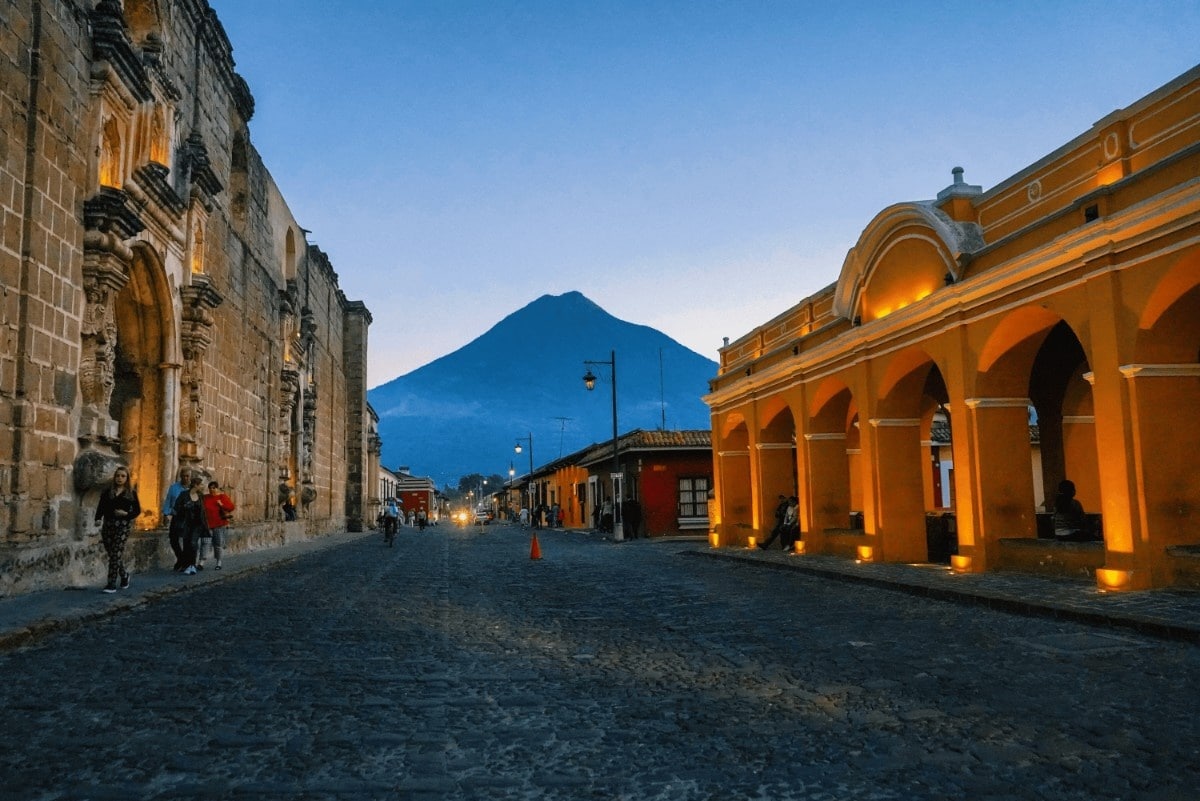
The best time to visit Guatemala falls within the dry season, from November to March. During these months, you’ll experience sunny days, comfortable temperatures, and easier travel conditions.
This period is ideal for outdoor sightseeing, hiking volcanoes, and attending popular festivals like Semana Santa (Holy Week).
July and August offer a special dry spell known as the “canícula,” a break in the rainy season with clear, sunny weather.
It’s a lesser-known window when travelers can enjoy Guatemala without heavy rains while avoiding the busiest crowds.
The high season from November to March means more tourists and higher prices, especially around Christmas and Easter.
If you prefer quieter trips, consider visiting during the shoulder seasons in April or October, when the weather remains pleasant, and attractions are less crowded.
Guatemala Month-by-Month Travel Guide
Here’s what to expect each month in Guatemala:
| Month | Weather & Conditions | Best Activities |
|---|---|---|
| January | Dry season continues, cool evenings | Hiking volcanoes, exploring Antigua without crowds |
| February | Coffee harvest season, lush landscapes | Cultural tours near Lake Atitlán |
| March | Warm days, mostly dry weather | Adventure sports like zip-lining and hiking |
| April | Holy Week (Semana Santa) season | Colorful processions and festivals (expect crowds and higher prices) |
| May | Start of rainy season, afternoon showers | Fewer tourists, greener landscapes |
| June | Rainy season is in full swing, sunny mornings | Early activities, turtle nesting begins on the coast |
| July | “Canícula” dry spell, sunny weather | Swimming and exploring the Semuc Champey pools |
| August | Still dry due to “canícula” | Cultural experiences like language schools and museums |
| September | Rain picks up again | Independence Day (September 15) celebrations with parades |
| October | Cooler temperatures and, rainy season slow | Off-season travel, lower prices, peaceful nature |
| November | Dry season returns | Day of the Dead celebrations in early November |
| December | Festive, dry, and cooler temperatures | Holiday celebrations and city markets |
Guatemala Top Experiences and Festivals by Season
Guatemala’s rich culture shines brightest in its festivals and outdoor adventures, which vary by season:
Major Festivals
- Semana Santa (Holy Week) in April: One of the world’s most famous Easter celebrations, with enormous street carpets and elaborate processions.
- Day of the Dead (Día de los Muertos) in early November: Families honor their ancestors with colorful altars and festivities.
- Festival of Saint Thomas (Rabin Ajaw) in late July: A vibrant celebration in the highlands filled with traditional music and dances.
For Nature Lovers
- The dry season is best for hiking volcanoes, exploring Mayan ruins like Tikal, and boating on Lake Atitlán.
- The rainy season brings lush jungles, waterfalls, and fewer tourists.
Pros and Cons of Each Season
| Season | Pros | Cons |
|---|---|---|
| Dry Season (Nov-Mar) | Sunny weather, festivals, and hiking opportunities | Crowds, higher prices |
| Rainy Season (May-Oct) | Lush landscapes, fewer tourists, lower prices | Afternoon rains, tougher roads |
Dry season provides better travel conditions and more events, but expect busy sites and peak prices. The rainy season offers green scenery and peace, but comes with afternoon thunderstorms that may disrupt plans. Roads can be bumpy or muddy in rural areas.
Pack rain gear and flexible itinerary plans to help, no matter when you visit.
Packing & Travel Tips for Every Season

Packing smart means enjoying Guatemala, rain or shine. For the dry season, bring comfortable layers; mornings and evenings can be cool, especially at higher elevations. Include sun protection like hats and sunscreen.
During the rainy season, pack a lightweight, waterproof rain jacket and quick-dry clothing. Waterproof shoes or sandals with a good grip help with slippery trails. Don’t forget insect repellent to protect against mosquitoes in jungle areas.
Bring a reusable water bottle to stay hydrated, and consider packing a daypack for short hikes and market visits. Always keep some cash ready, as some small towns may not accept cards.
Guatemala Local’s Insights: Where to Go When?
Choosing where to visit depends on the season:
- Antigua and Lake Atitlán: Best year-round, but festivals shine from November through April.
- Tikal and the Petén jungles: Visit during the dry season for easier exploration.
- Semuc Champey: Best during the “canícula” in July and August when the pools are accessible.
- Coastal areas (like Monterrico): Visit in the rainy season for turtle nesting.
Make your plans flexible, keeping local weather patterns in mind. Guatemala’s diversity means every region offers a unique experience.
Conclusion
Guatemala welcomes visitors with open arms every season, each offering distinct experiences and rewards.
Dry months provide clear skies, perfect for outdoor trips and major festivals. The rainy season brings lush green scenery, fewer crowds, and budget-friendly travel options.
From volcano treks to ancient Mayan sites, from vibrant local celebrations to peaceful lakeside retreats, this Central American gem delivers unforgettable moments year-round.
Smart packing and flexible planning ensure success regardless of when you arrive. Your Guatemalan experience will create lasting memories filled with warmth, culture, and natural splendor that inspire future returns.
Frequently Asked Questions
When Is the Best Time to Visit Guatemala?
The dry season from November to March offers the best weather with sunny days and festivals, ideal for sightseeing and outdoor activities. July-August is a good dry break, too.
Is It Safe to Travel During the Rainy Season?
Yes, it is safe, but expect afternoon showers and muddy roads. Morning activities work well. Pack rain gear, and plan flexible itineraries for weather changes.
What Festivals Should I Not Miss?
Semana Santa in April and Day of the Dead in November are must-sees. Also, the Festival of Saint Thomas in July offers vibrant cultural experiences.

